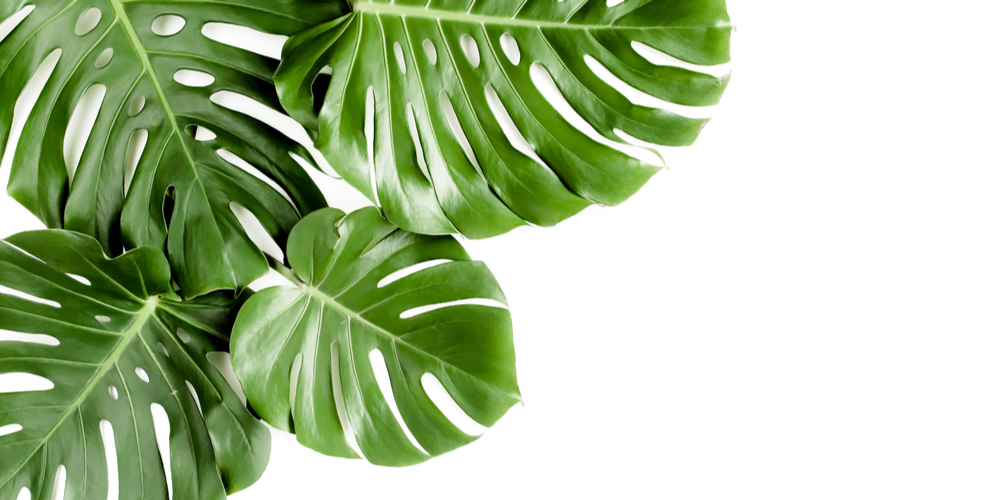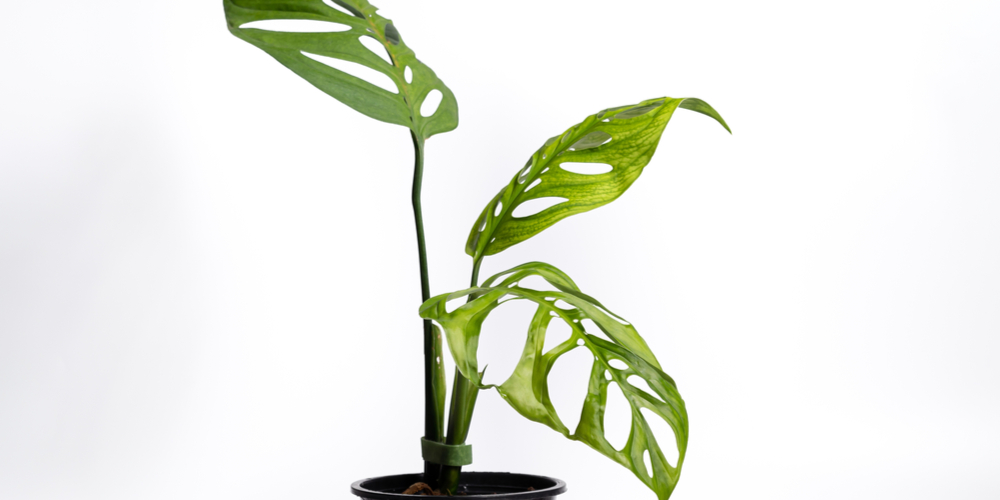Houseplants can change the looks of your home. If you need something to add some life to your home, there might be no better choice than adding a plant. However, some plants need more care than others. Monstera esqueleto is one of them. Of course, that doesn’t mean adding it to your interiors is a bad idea! Far from it!
After all, this gorgeous tropical plant can spice up any environment. But to get the most out of its beauty, you’ll need to learn about its needs and requirements.
To make things easier for you, we put together this essential guide: keep reading to explore everything you need to know about growing a Monstera esqueleto at home!

| Botanical Name | Monstera epipremnoides |
| Common Name | Monstera Esqueleto |
| Plant Type | Perennial |
| Flower Color | It will rarely bloom as a houseplant. However, in nature, monstera esqueleto produces cream-colored stalks of flowers with delicate hints of purple. |
| Size When Mature | Up to 20 inches tall. Its leaves can measure between 4 and 20 inches long. |
| Bloom Time | Spring |
| Sun Requirements | Bright Indirect Light |
| USDA Hardiness Zones | 9-11 |
| Soil PH Range | 5.5 and 7.0 |
| Soil Type | Loamy, well-aerated, and rich |
| Water Needs | Medium |
| Native Area | Costa Rica |
What you Need to Know About Monstera Esqueleto
You may be familiar with the Monstera species. These plants are popular houseplants (and for their reasons!). Among the several varieties that make up this family, the monstera esqueleto is one of the most challenging to grow.
However, if you are not afraid of taking this task up, this gorgeous tropical plant will reward you with stunning leaves that will add a tropical touch to your indoor spaces.
Monstera Esqueleto tends to be smaller and more fenestrated than other plants of this species. Plus, its leaves are light green and have an attractive leathery texture.
Native to Costa Rica, this plant is a bit picky about its growing conditions. However, when you recreate the ideal environment for its growth (with adequate lighting, humidity, temperature, nutrition, and soil), you shouldn’t have issues having a thriving monstera esqueleto!
If you have pets and kids around, be careful: this plant might be slightly toxic when ingested. Try to put it somewhere they will not reach it, or keep an eye on your curious animals and humans!
How to Care for Monstera Esqueleto
To successfully grow a monstera esqueleto, you should learn about its needs and requirements. We collected them here, so you don’t have to worry about anything else!
Light
Monstera Esqueleto comes from the rainforests of Costa Rica, where taller trees protect it from the harsh tropical sun. For this reason, you should avoid exposing it to direct sunlight (which will burn it). Instead, place it where it will receive bright indirect light.
The ideal location would be next to an east-facing window. However, you will get excellent results even when putting it a few feet away from a south-facing window. If you feel your plant is getting too much sunlight, consider adding shears.
Water and Soil Needs
Ensuring your houseplants have a suitable potting mix is essential for their health. After all, these plants need excellent drainage to prevent root rot and fungal infections (that might originate from the humid environment).
Also, you need to give your plant enough space to grow. Choose a pot at least 2 inches larger than your plant’s root ball. Of course, the container must have suitable drainage holes.
While Monstera esqueleto isn’t so fussy about pH levels, it will perform much better if you plant it in slightly acidic to neutral loamy soil (between 5.5 and 7.0).
Keep your plant moist but don’t overwater it! The top two inches should feel dry before adding extra moisture. Usually, you should deeply water your plant every couple of weeks.
If you notice the soil is still moist after 14 days, you may have a drainage issue. Consider improving aeration by adding sand or gravel to the potting mix.
Temperature Requirements
Your monstera esqueleto will thrive at temperatures between 70 and 80°F. So, it will perform excellently as a houseplant. And if you live in USDA hardiness zones between 9 and 11, you might also get satisfactory results planting it outdoors. Your plant will struggle at temperatures below 60°F.
Additionally, don’t forget to avoid using AC near your monstera! This tropical plant needs plenty of humidity. You can recreate a better environment by getting a humidifier or setting up a pebble tray.
Fertilizer
Monstera esqueleto will benefit from high-quality fertilizers in their potting mix. After all, they need plenty of phosphorous and nitrogen to produce the stunning leaves we all love.
Consider getting a slow-release product to add during the spring and summer. Don’t forget to suspend its application in the winter, when your plant will go dormant.
Common Diseases
The most common diseases with this plant originate from too little or too much watering. Most of the time, adjusting the watering schedule (or changing your potting mix) will do the trick. Besides that, this plant rarely attracts pests, meaning you don’t have to worry too must about them!
Monstera Esqueleto Propagation
Propagating your Monstera esqueleto isn’t a particularly challenging task. So, once you manage to grow a healthy one, you’ll be able to get many other plants!
The most efficient methods include propagation by stem cutting or division. For the first, the process is simple: all you have to do is find healthy stems and wait for them to root in an adequate potting mix.
The second requires you to handle your mother plant carefully and untangle the root ball to separate the younger plant from the smaller ones.
Related article: Monstera Aurea Care

